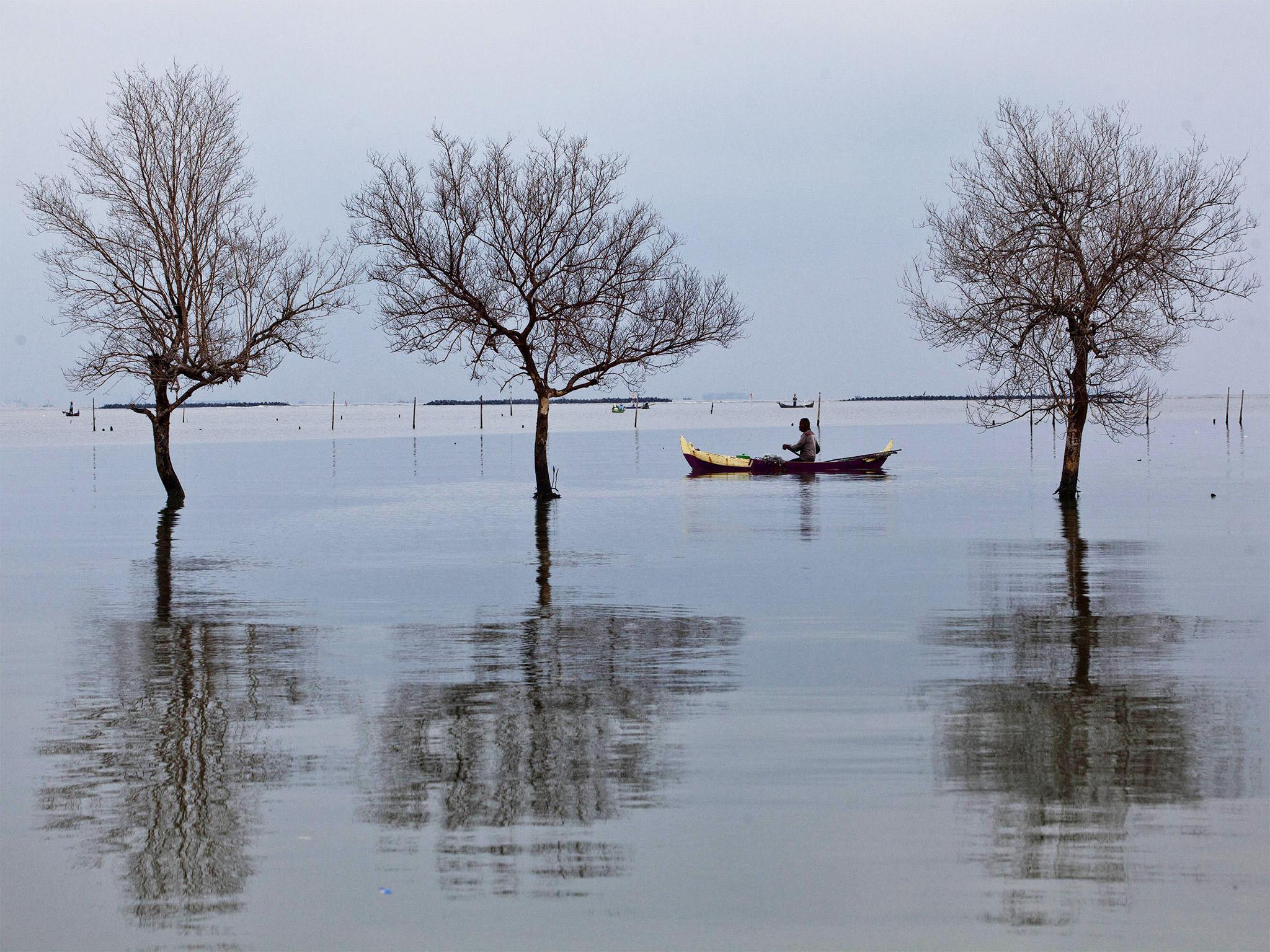Ignoring climate scientists' forecasts about sea level rise could prove 'disastrous', experts warn
Donald Trump may be known as a climate science denier, but when one of his golf courses was threatened by rising seas, he wanted to build a wall

Ignoring climate models which predict sea levels could rise by an average of more than two metres by 2100 could prove “disastrous”, two leading US scientists have warned.
Writing in the prestigious journal Science, Professor Michael Oppenheimer, of Princeton University, and Professor Richard Alley, of Pennsylvania State University, said building flood defences could take decades so there was a need to prepare.
For example, the Thames Barrier was first proposed following a storm which killed more than 2,000 people in countries around the North Sea in 1953, but the project wasn't completed until 30 years later.
The scientists wrote that improvements in modelling techniques had led to predictions of greater sea level rise than previously thought.
A recent study estimated that the melting of some of the ice on Greenland, the Antarctic and mountain glaciers, combined with the expansion of the oceans due to their warmer temperature, would result in an estimated sea level rise of about 1.84m by the end of this century.
However, the upper end of the uncertainty range was above two metres.
“Taking an engineering approach and defending against the highest projections available at a given time, plus a margin of error, can be prohibitively expensive. But ignoring such estimates could prove disastrous,” the professors said.
“Furthermore, flood defences take a lot of time and political will to implement.
“Waiting another few decades to decide on specific adaptations in the hope that scientific predictions will become firmer may put completion off until the last quarter of this century. At that time, actual sea level rise could be approaching two metres, with a much larger rise still to come.”
Bangladesh is one of the most vulnerable countries in the world to sea level rise. An increase of just 1.5m would flood 22,000sq km of the country, forcing some 17 million people to leave their homes. Islands have already started disappearing in the Pacific Ocean.
Donald Trump’s election as US President has led to concern he will ignore climate scientists, but it is unclear how he will react to scientists warnings about rising seas.
Despite infamously describing climate change as a “hoax”, the Trump Organisation sought permission to build a sea wall to protect the Trump International Golf Links in County Clare. A submission cited sea level rise due to climate change as one of the reasons for the wall.
The proposal was scrapped this month amid concern the wall might endanger a rare type of snail.
Professors Oppenheimer and Alley wrote there were “better options for policy-makers than to play wait-and-see”.
“Measures specifically designed with an eye toward evolving predictions include building defences such as those in the Netherlands, which can be augmented over time; building structures resilient to periodic flooding; and retreat from exposed areas combined with enhancement of natural defences such as wetlands,” they suggested.
“In flood-prone areas, perverse incentives, such as sub-market insurance premiums, should be eliminated while substituting reduced premiums and other incentives contingent on property owners taking adaptive measures before disaster occurs.
“These measures would reduce the large expense now incurred for disaster relief and rebuilding.”
The researchers stressed that predictions of sea level rise involved “deep uncertainties”. But this was, they added, unavoidable. “Coastal protection is a risk management issue, and risks cannot be fully managed outside a probabilistic context,” researchers wrote.
Research into warming events in the past suggests sea levels would eventually rise much further than two metres if the current rate of warming is allowed to continue.
“Improved analyses of paleo-climate proxies [such as ice cores] indicate strongly that the sea surface was six to nine metres higher than today during the Last Interglacial ( about 130,000 to 116,000 years ago),” the professors said.
“These high sea levels can only be explained through mass loss from the ice sheets in response to a sustained forcing that is likely to be exceeded before 2100 under high emissions pathways.”
However they said while the rise had been “geologically rapid” but current thinking suggested it could not happen within the current century.
Join our commenting forum
Join thought-provoking conversations, follow other Independent readers and see their replies
Comments
Bookmark popover
Removed from bookmarks